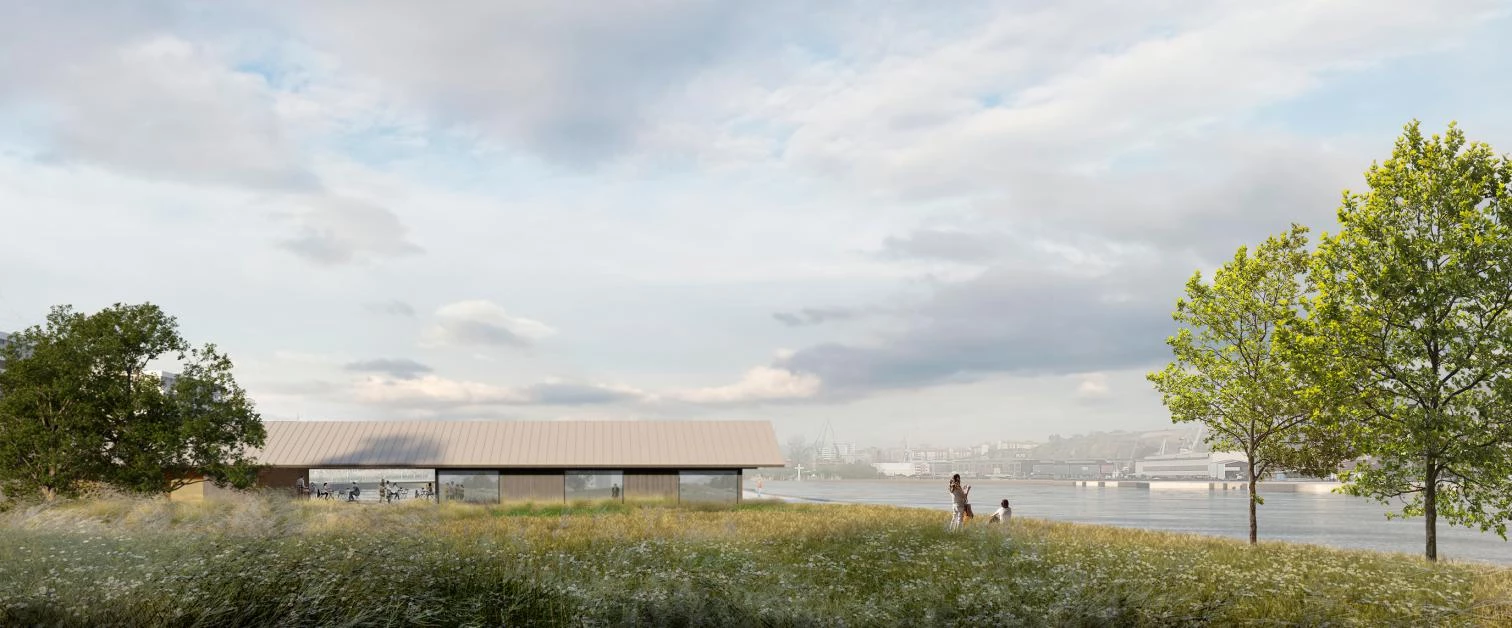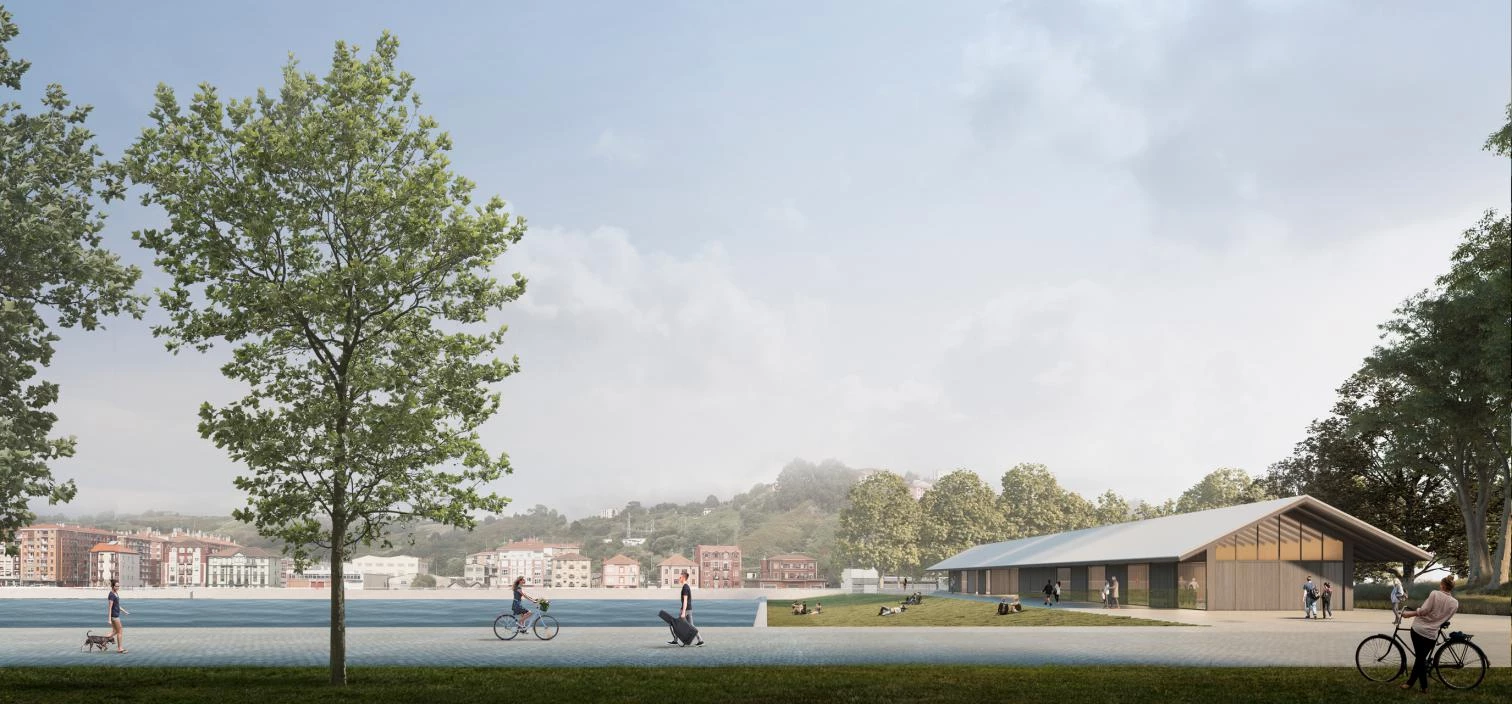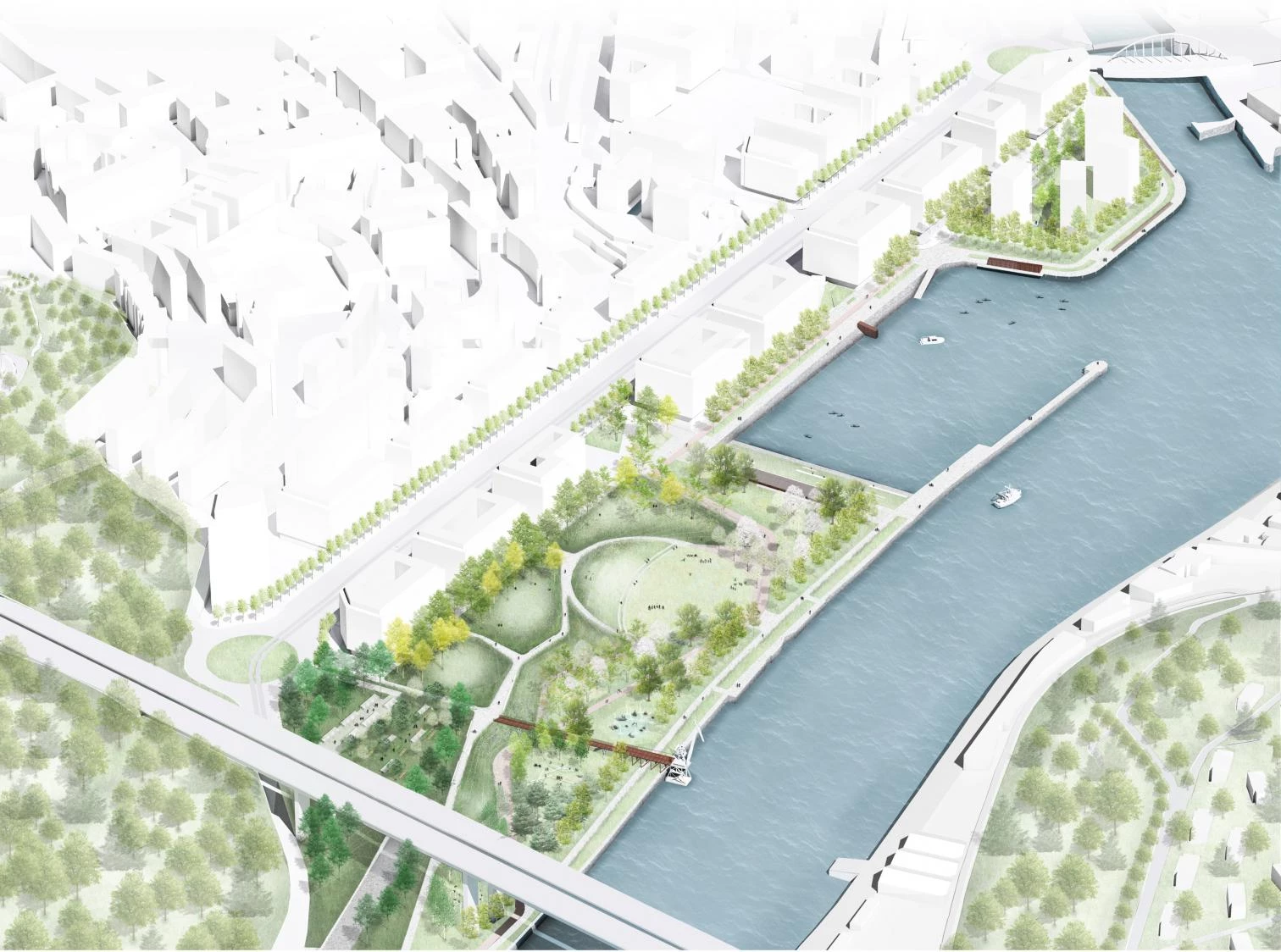Galindo Este Park in Barakaldo
Burgos & Garrido TYPSA- Type Landscape architecture / Urban planning Park
- City Baracaldo
- Country Spain
With a project titled ‘El jardín en movimiento’ (‘The Garden in Motion’), the practice of Francisco Burgos and Ginés Garrido (BGA) – in collaboration with Typsa Ingenieros Consultores y Arquitectos, GEA 21 and Laura Jeschke – has placed first in the ideas competition organized by Bilbao Ría 2000 for a park in Barakaldo, specifically in the Galindo-Este area along the edge of the Nervión estuary.
The park will ease access from Barakaldo to the Ría, now partly blocked by the railway, and it will wrap up the urbanization process of the avenue Altos Hornos de Vizcaya. An artificial topography will create a smooth connection, resolving grade differences, between the banks of the estuary and the urban front of east Barakaldo.
The park will have three bands: a large three-lined terrace overlooking the Nervión; a slope carpeted with wild, spontaneously growing plants that serves to smoothen out the uneven terrain while providing accessways; and an open space for a variety of events, south of the Portu dock.

The scheme also proposes three small wooden constructions. The first one restores the original morphology of the historical French-Belgian loading platform, extending it with a walkway to Avenida Altos Hornos de Vizcaya which with a new staircase links the upper terrace to the heart of the park. The second one is a shed for different uses (restaurant, classrooms, and more). And the third one, facing south and towards the pier, is a grandstand where people will stop and rest, and dock small boats like kayaks.
A good part of the park will allow plants to grow spontaneously, with native species requiring little, even very minimal maintenance. The French gardener and philosopher Gilles Clément called this wild vegetation ‘Jardins en mouvement.’
The design limits energy consumption during construction and in subsequent upkeep, and incorporates equipment for efficient administration of shallow waters, improving natural drainage and adding SUDS (Urban Systems for Sustainable Drainage), a strategy for adapting to climate change in cities, with permeable pavements and infiltration-lamination ponds that harness fluvial waters.











